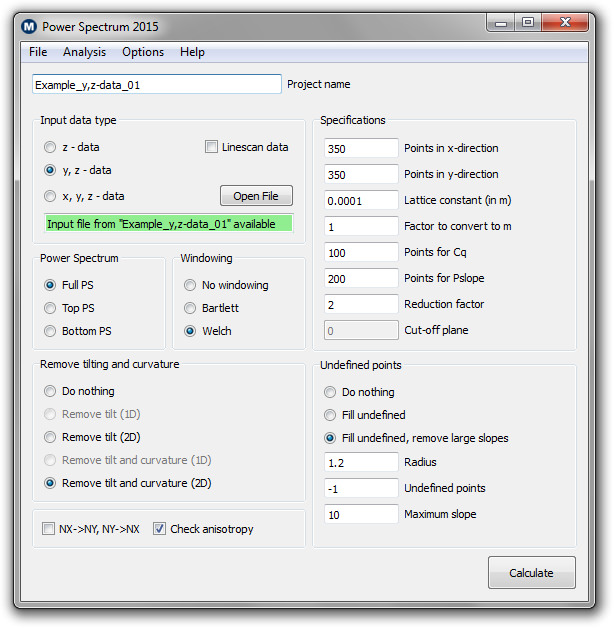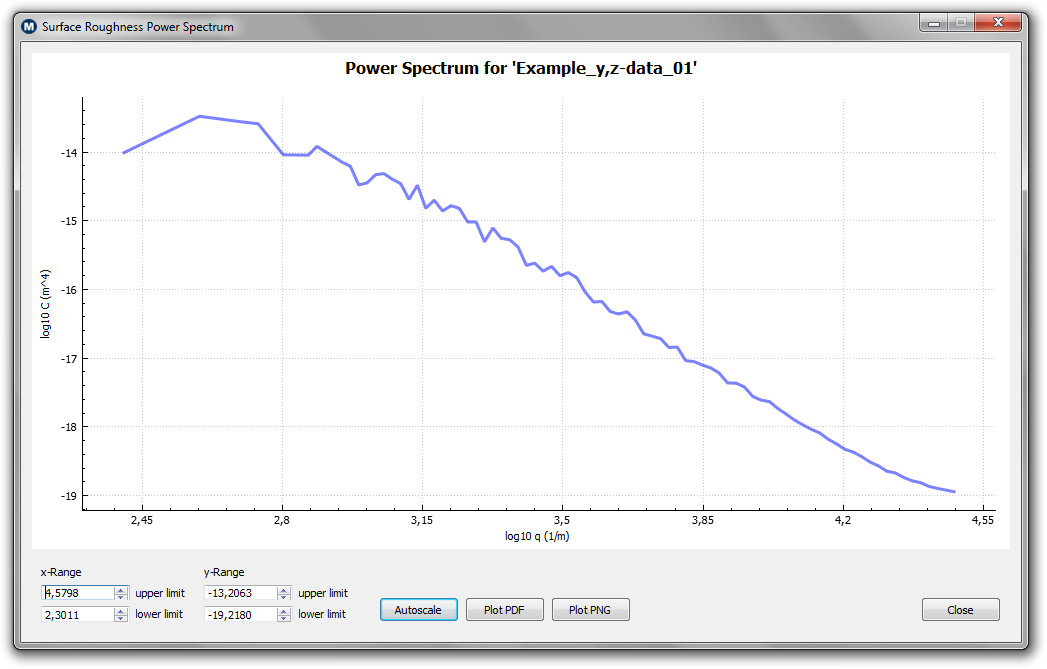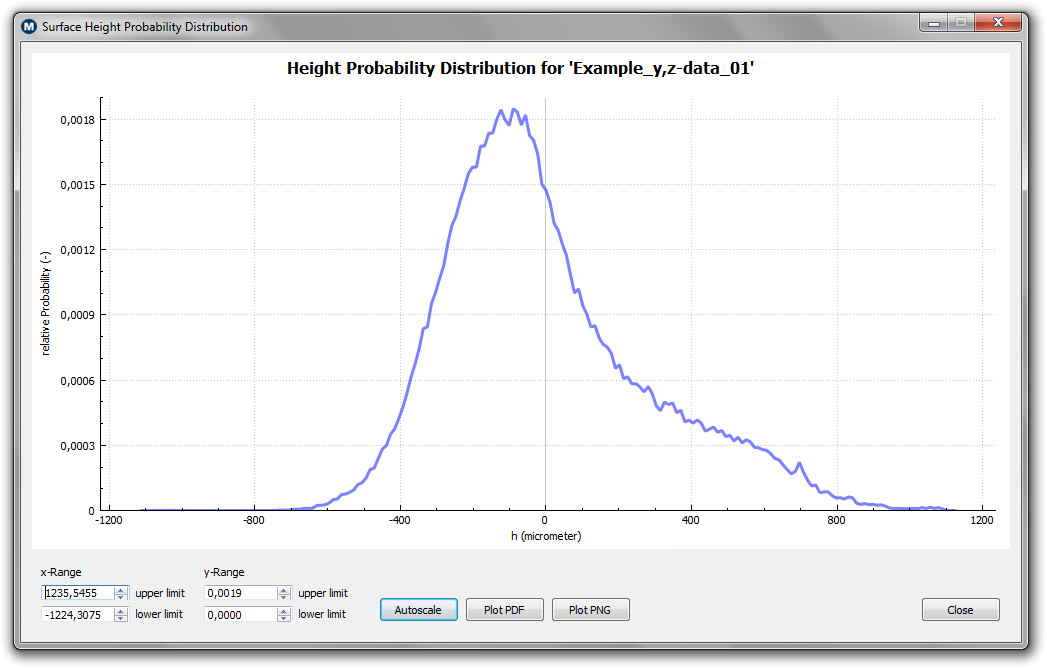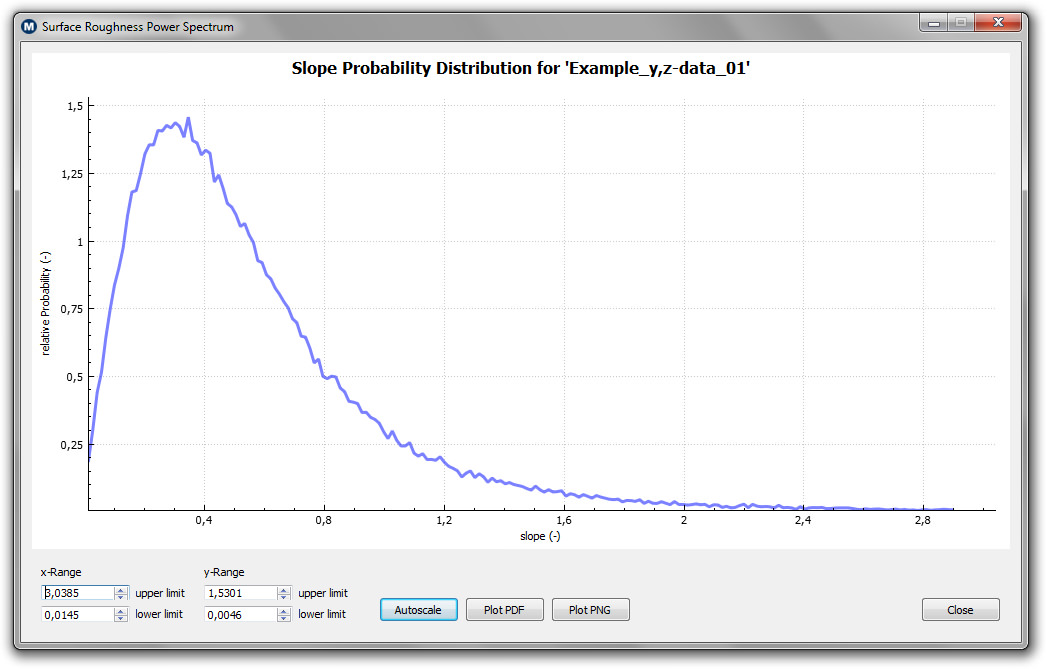The influence of roughness on the adhesion and frictional properties is mainly determined by the surface roughness power spectrum C(q) (or power spectral density) which is the most important quantity characterizing roughness. The surface roughness power spectrum fully characterizes all statistical properties of a measured surface. This means that all available information on the roughness is uniquely preserved in this quantity. It can be calculated directly from nearly any measured topography using our power spectrum software. This means that the power spectrum software is the perfect tool to further analyze your topography files and to calculate the input files necessary for our contact mechanics and rubber friction software.
Note that while the root mean square roughness is usually dominated by the longest wavelength surface roughness components, higher order moments of the power spectrum such as the average slope or the average surface curvature are dominated by the shorter wavelength components. All these roughness parameters have therefore one thing in common, they do not describe the surface properties on different length scales. However it has been found that this is necessary to understand the true contact area between a tire with the road surface. It is hence not enough to gather information about a measured topography by only calculating the standard roughness parameters which exist for a long time already.
The surface roughness power spectrum is the only statistical quantity which covers roughness properties over all length scales without loosing information over the surface measured. This is actually very important because practically all macroscopic bodies have surfaces with roughness on many different length scales. When two bodies with nominally flat surfaces are brought into contact, real (atomic) contact will only occur in small randomly distributed areas, and the area of real contact is usually an extremely small fraction of the nominal contact area. The contact regions can be visualized as small areas where asperities from one solid are squeezed against asperities of the other solid; depending on the conditions the asperities may deform elastically or plastically. How large is the area of real contact between a solid block and a substrate? This fundamental question has extremely important practical implications. For example, it determines the contact resistivity and the heat transfer between the solids. It is also of direct importance for wear and sliding friction, e.g., the rubber friction between a tyre and a road surface, and has a major influence on the adhesive force between two solid blocks in direct contact.
The power spectrum calculator offers a quick, intuitive and hence easy to use software for calculating the surface roughness power spectrum of all kinds of different input formats.The figure below shows the latest Windows version of the program. After specifying the format type and some other important information about the topography file, like how many points in x and y-direction or the lattice constant between two points, one can choose between calculating the full, top or bottom power spectrum.
 |
| Windows Version of the power spectrum software |
When the calculation is finished successfully it is possible to directly check the power spectrum as shown below. The power spectrum software will give you in addition to the power spectrum many other important parameters. This includes different roughness parameters as for example the rms roughness value or the rms slope.
 |
| The surface roughness power spectrum |
Here we show two other quantities which can be very to check after the power spectrum has been calculated as they contain very useful information. On the left is the height probability distribution while on the right we show the slope probability distribution. It is recommended to check these two curves after the calculation is finished to make sure that the results are reasonable and consistent with the power spectrum.
 |
 |
| The height probability distribution |
The slope probabilty distribution |
More information and details on the surface roughness power spectrum (PS) can be found in this
review publication which gives a very nice introduction to this whole topic illustrating the importance of the power spectrum in contact mechanics and friction.
For further information on the roughness generator please consider the following information:
| The manual of the power spectrum software for the Windows version. |
Download Manual |
| The Data.Out file is a summary of the different options chosen for a particular calculation. The options are briefly explained and the most important results summarized. The Data.Out file is always created after the calculation is finished. |
Download Data.Out |
| An example power spectrum output file. |
Download Example Power Spectrum |
For more information on surface roughness as well as the surface roughness power spectrum we would like to refer you to our online lectures.
In case you are interested in using the surface generator or you have further questions concerning the software please feel free to contact us.
Best Sneakers | adidas




